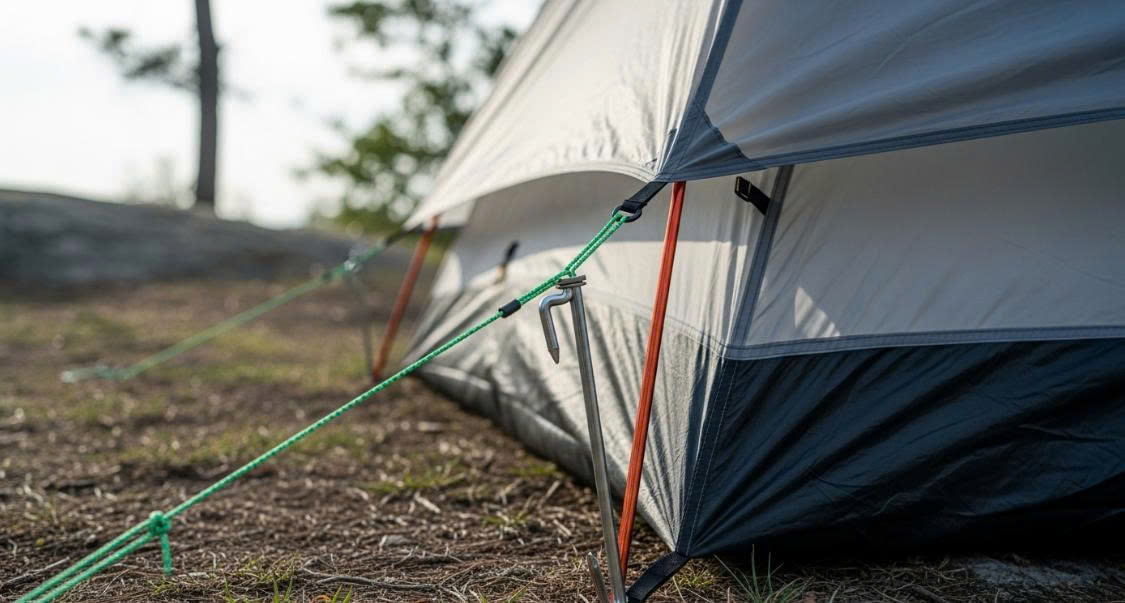High-Intensity Interval Training (HIIT) has taken the fitness world by storm, and for good reason. It’s a powerful, efficient, and exciting way to get fit, burn calories, and boost your overall health in a short amount of time. If you’re new to fitness or looking for a way to shake up your routine, HIIT workouts are the perfect entry point. This blog post will guide you through everything you need to know about HIIT workouts for beginners, from what they are, why they work, and how to get started safely. With a sample workout plan and tips tailored for newcomers, you’ll be ready to ignite your fitness journey in no time!
What is HIIT?

HIIT stands for High-Intensity Interval Training, a workout method that alternates short bursts of intense exercise with brief periods of rest or low-intensity movement. Unlike traditional steady-state cardio, where you maintain a consistent pace for a prolonged period, HIIT pushes your body to work hard in quick, intense intervals, followed by recovery periods. A typical HIIT session lasts anywhere from 10 to 30 minutes, making it ideal for busy schedules.
For beginners, HIIT is appealing because it’s versatile, requires minimal equipment, and can be adapted to any fitness level. Whether you’re exercising at home, in a gym, or outdoors, HIIT can fit seamlessly into your lifestyle. Plus, it delivers results—fast.
Why HIIT is Perfect for Beginners
You might be thinking, “High-intensity sounds intimidating!” But don’t worry—HIIT is highly customizable, making it accessible even for those just starting their fitness journey. Here are some reasons why HIIT is a fantastic choice for beginners:
1. Time-Efficient
With HIIT, you don’t need to spend hours working out. A 20-minute session can be as effective as, or even more effective than, a longer moderate workout. This is perfect for beginners who may feel overwhelmed by long exercise routines.
2. Burns Calories and Fat
HIIT workouts are known for their “afterburn” effect, scientifically called excess post-exercise oxygen consumption (EPOC). This means your body continues to burn calories even after you’ve finished exercising, helping you maximize fat loss.
3. Improves Cardiovascular Health
HIIT improves heart health by increasing your cardiovascular endurance. Even short sessions can strengthen your heart and lungs, making daily activities feel easier over time.
4. No Equipment Needed
Many HIIT workouts rely on bodyweight exercises, so you don’t need a gym membership or fancy equipment. This makes it budget-friendly and convenient for beginners.
5. Boosts Mood and Energy
The intense bursts of exercise release endorphins, the feel-good hormones that lift your mood and energy levels. For beginners, this can make workouts more enjoyable and motivating.
Getting Started with HIIT: Tips for Beginners

Before diving into your first HIIT workout, here are some essential tips to ensure you start safely and effectively:
1. Consult a Doctor
If you’re new to exercise or have any health conditions, check with your healthcare provider before starting HIIT. This ensures you’re cleared for high-intensity activity.
2. Warm Up Properly
A good warm-up prepares your muscles and joints for the intensity of HIIT. Spend 5-10 minutes doing dynamic stretches or light cardio, like jogging in place or arm circles, to get your blood flowing.
3. Start Slow
As a beginner, you don’t need to go all-out right away. Choose exercises you’re comfortable with and focus on proper form. Gradually increase intensity as you build strength and confidence.
4. Listen to Your Body
HIIT is intense by design, but it shouldn’t leave you feeling exhausted or in pain. If you feel dizzy, overly fatigued, or experience discomfort, take a break and reassess your intensity.
5. Stay Hydrated
Drink water before, during, and after your workout to stay hydrated, especially since HIIT can make you sweat a lot.
6. Rest and Recover
Rest days are crucial for beginners. Aim for 2-3 HIIT sessions per week with at least one rest day in between to allow your muscles to recover and prevent burnout.
Sample HIIT Workout Plan for Beginners

Ready to give HIIT a try? Below is a beginner-friendly, 20-minute HIIT workout that requires no equipment. It’s designed to get your heart pumping while keeping things simple and safe. Each exercise is performed for 30 seconds, followed by 30 seconds of rest. Complete the circuit 3-4 times, with a 1-minute rest between rounds.
Warm-Up (5 Minutes)
-
Jumping Jacks: 1 minute
-
High Knees: 1 minute
-
Arm Circles: 30 seconds forward, 30 seconds backward
-
Bodyweight Squats: 1 minute
-
Lunges: 1 minute (alternate legs)
HIIT Workout Circuit (Repeat 3-4 Times)
-
Squats (30 seconds work, 30 seconds rest)
Stand with feet shoulder-width apart, lower your hips until your thighs are parallel to the ground, then push back up. Keep your chest up and core engaged. -
Push-Ups (Modified if Needed) (30 seconds work, 30 seconds rest)
Perform push-ups on your toes or knees, keeping your body in a straight line. Lower your chest toward the ground, then push back up. -
Mountain Climbers (30 seconds work, 30 seconds rest)
In a plank position, bring one knee toward your chest, then quickly switch legs, as if running in place while in a plank. -
Burpees (Modified if Needed) (30 seconds work, 30 seconds rest)
From standing, squat down, place your hands on the ground, jump or step back to a plank, then jump or step back to standing and stand up. For a modification, skip the jump. -
Plank Hold (30 seconds work, 30 seconds rest)
Hold a forearm plank with your body in a straight line, engaging your core and keeping your hips steady.
Cool-Down (5 Minutes)
-
Standing Hamstring Stretch: 30 seconds per leg
-
Cat-Cow Stretch: 1 minute
-
Chest Opener Stretch: 30 seconds
-
Child’s Pose: 1 minute
-
Deep Breathing: 1 minute
This workout is scalable. If 30 seconds of work feels too intense, start with 20 seconds and gradually increase. If you’re feeling strong, try 40 seconds of work with 20 seconds of rest.
Common Mistakes to Avoid
As a beginner, it’s easy to make mistakes when starting HIIT. Here’s how to avoid them:
1. Skipping the Warm-Up or Cool-Down
Jumping straight into high-intensity exercise without warming up increases the risk of injury. Similarly, skipping the cool-down can lead to muscle soreness. Always allocate time for both.
2. Poor Form
Improper form can lead to injuries and reduce the effectiveness of exercises. Focus on quality over quantity, and consider watching tutorials or working with a trainer to learn proper technique.
3. Overdoing It
Doing HIIT every day can lead to burnout or injury, especially for beginners. Stick to 2-3 sessions per week and complement them with lighter activities like walking or yoga.
4. Ignoring Recovery
Recovery is when your body repairs and strengthens. Ensure you’re getting enough sleep, eating a balanced diet, and taking rest days to support your progress.
How to Stay Motivated
Starting a new workout routine can feel daunting, but staying motivated is key to long-term success. Here are some tips to keep you on track:
1. Set Realistic Goals
Aim for small, achievable goals, like completing two HIIT workouts per week or improving your endurance for a specific exercise. Celebrate your progress to stay motivated.
2. Track Your Progress
Use a fitness journal or app to log your workouts, noting how you feel and any improvements in strength or stamina. Seeing your progress can be incredibly motivating.
3. Mix It Up
HIIT is versatile, so try different exercises or formats to keep things fresh. You can incorporate dumbbells, resistance bands, or even outdoor sprints as you gain confidence.
4. Find a Workout Buddy
Exercising with a friend or joining a fitness community can make HIIT more fun and hold you accountable.
5. Reward Yourself
Treat yourself to small rewards, like new workout gear or a relaxing bath, after reaching milestones. Positive reinforcement keeps you excited about your fitness journey.
Nutrition Tips for HIIT Beginners

To get the most out of your HIIT workouts, fuel your body properly. Here are some beginner-friendly nutrition tips:
-
Pre-Workout: Eat a light snack 1-2 hours before exercising, such as a banana with peanut butter or Greek yogurt with fruit. This provides energy without weighing you down.
-
Post-Workout: Refuel with a mix of protein and carbs within 30-60 minutes after your workout. A smoothie with protein powder, berries, and spinach is a great option.
-
Stay Hydrated: Drink water throughout the day, not just during your workout, to support performance and recovery.
-
Balanced Diet: Focus on whole foods like lean proteins, vegetables, fruits, whole grains, and healthy fats to support your energy levels and muscle recovery.
FAQs About HIIT for Beginners
1. How often should beginners do HIIT?
Beginners should aim for 2-3 HIIT sessions per week, with rest days in between to allow for recovery.
2. Can I do HIIT if I’m overweight or out of shape?
Yes! HIIT can be modified for any fitness level. Start with low-impact exercises and shorter work intervals, and consult a doctor if you have health concerns.
3. Do I need equipment for HIIT?
No, many HIIT workouts use bodyweight exercises. However, you can add equipment like dumbbells or resistance bands as you progress.
4. How soon will I see results from HIIT?
Results vary, but many beginners notice improved energy and mood within a few weeks. Visible changes, like fat loss or muscle tone, may take 4-8 weeks with consistent effort and proper nutrition.
Conclusion
HIIT workouts are a game-changer for beginners looking to kickstart their fitness journey. With their time efficiency, versatility, and ability to deliver results, they’re an excellent way to build strength, burn fat, and boost confidence. By starting slow, focusing on form, and listening to your body, you’ll set yourself up for success. Try the sample workout above, stay consistent, and watch your fitness soar. Ready to ignite your journey? Lace up your sneakers and get moving—you’ve got this!





.jpg)
.jpg)






